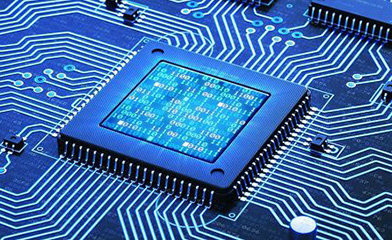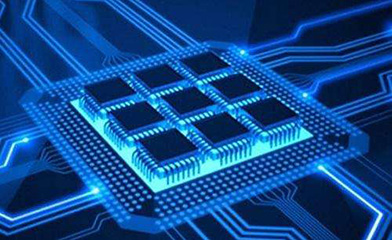2021.09.14
Analysis of the technical level and characteristics of the semiconductor discrete device industry
The technology of semiconductor discrete devices involves many disciplines and fields such as microelectronics, semiconductor physics, materials science, electronic circuits, etc. The combination of different disciplines and domain knowledge promotes the continuous development of new technologies at the edge of the industry. As the overall technical level requirements of products in the terminal application field are getting higher and higher, the semiconductor discrete device technology is also constantly moving forward under the promotion of the market. New materials, low-loss and high-reliability device structure theory, high-power-density chip manufacturing and Packaging technology has been applied to the production of discrete devices, and the technical content of products in the industry is increasing day by day, and the difficulty in design and manufacturing has increased accordingly.
In recent years, my country’s semiconductor discrete device manufacturing companies have continued to introduce, digest, absorb, re-innovate, and innovate independently, resulting in a substantial increase in product technology content and performance levels. Some high-quality enterprises have reached the international advanced level in terms of technology and technology in the field of subdivided products, and gradually realized import substitution by virtue of their cost and technical advantages. However, in some high-end product areas such as discrete device chips, there is still a certain gap between domestic production technology and foreign advanced level.
The technical level and technical characteristics of the industry
(1) Periodicity
As basic functional components, semiconductor discrete devices cover many supporting fields such as communication circuits, consumer electronics, smart terminals, automotive electronics, LED lighting, and smart grids. With the development of new technical features in the semiconductor discrete device industry, its application areas will continue to expand. Since semiconductor discrete devices serve a wide range of industries, they are not significantly affected by cyclical changes in a single downstream industry, but they have a certain relevance to the overall macroeconomic prosperity.
(2) Regional
The production of domestic semiconductor discrete devices is mainly concentrated in the electronic information industry manufacturing areas with a relatively developed economy and a complete industrial base. After years of development, my country has formed three major clusters of electronic information industries. That is, the Yangtze River Delta with Shanghai, Jiangsu, and Zhejiang as the center, the Pearl River Delta with Guangzhou and Shenzhen as the leaders, and the Bohai Bay area with Beijing and Tianjin as the axis. Affected by this market area, the production of the semiconductor discrete device industry has shown certain regional characteristics.
(3) Seasonal
Discrete semiconductor devices have a wide range of applications, and the seasonal demand of downstream customers shows a dynamic equilibrium relationship of one and the other, and the seasonal characteristics of the industry are not obvious.
Industry competition
From the perspective of the global semiconductor discrete device industry structure, the United States, Europe and Japan are in a leading position in competition. Among them, there are many semiconductor discrete device manufacturers in the United States and their technology has leading advantages. Typical representative companies include Texas Instruments, ON Semiconductor, Vishay Semiconductor, etc. Its main sales markets are the United States and the Asia-Pacific region; European semiconductor discrete device manufacturers have a complete product line, and representative companies include Anshi Group, Infineon, STMicroelectronics, etc. The main sales markets are Europe and the Asia-Pacific region; Japanese semiconductor discrete device representative companies There are companies such as Toshiba, Rohm Semiconductor, and Fuji Electric, whose main sales markets are in Japan.
Compared with foreign countries, my country's semiconductor discrete device industry started late, and developed gradually through foreign introduction and independent innovation of domestic enterprises. There is a certain gap between my country's semiconductor industry and international developed countries or regions, especially in the field of high-end products. Because foreign companies control core technologies, key components, key equipment and other resources, high-end products still mainly rely on overseas imports. As China is the world’s largest emerging market in the semiconductor industry, international manufacturers attach great importance to the development opportunities brought by the Chinese market, continue to increase R&D, technology, capital and personnel investment, and carry out marketing networks and market layouts. At present, international leading companies still occupy the Chinese discrete device market. The dominant position.
With years of market development experience, my country's semiconductor discrete device industry has formed a certain scale. Domestic leading companies have continued to strengthen independent innovation and technological upgrading, and have achieved a greater degree in sales scale, technical level, production technology, and product quality. And gradually gained a certain market competitive advantage in different segmented application fields. At the same time, since China is the world’s largest sales market for power semiconductors, domestic manufacturers are closer to downstream customers, and communicate with local customers more smoothly. Compared with foreign manufacturers, they have obvious advantages in responding to customer needs and reducing product costs. Competitive advantages of power semiconductor devices, the gradual increase in the replacement rate of domestic brands of power semiconductor devices is the general trend in the future.
Faced with a broad market prospect, superimposed on the encouragement of national industrial policies and the continuous improvement of the industry's technical level, domestic enterprises still have a large space for development in terms of technological process and market share improvement. Under the uncertain conditions of international trade disputes, the demand for import substitution in the semiconductor industry, including discrete devices, is becoming more and more obvious, which will form a significant competitive advantage and room for market share improvement.

Introduction to MOSFET production process
2021.09.09
From the beginning of production to the completion of the manufacturing of semiconductor products, there are mainly two processing processes, which are called front-end production and back-end production.

Key Points of the Design and Layout of Semiconductor Wafer Shop
2021.09.10
During the production process of semiconductor device wafers, it is easy to be affected by foreign objects, dust particles, metal ions and other foreign objects to destroy the surface structure.

What is wafer testing? How to perform wafer test?
2021.09.10
Wafer testing is to test each die on the wafer, attach a probe made of gold wire to the inspection head to make a probe (probe) as thin as a hair, and contact the pad on the die to test its electrical Characteristics